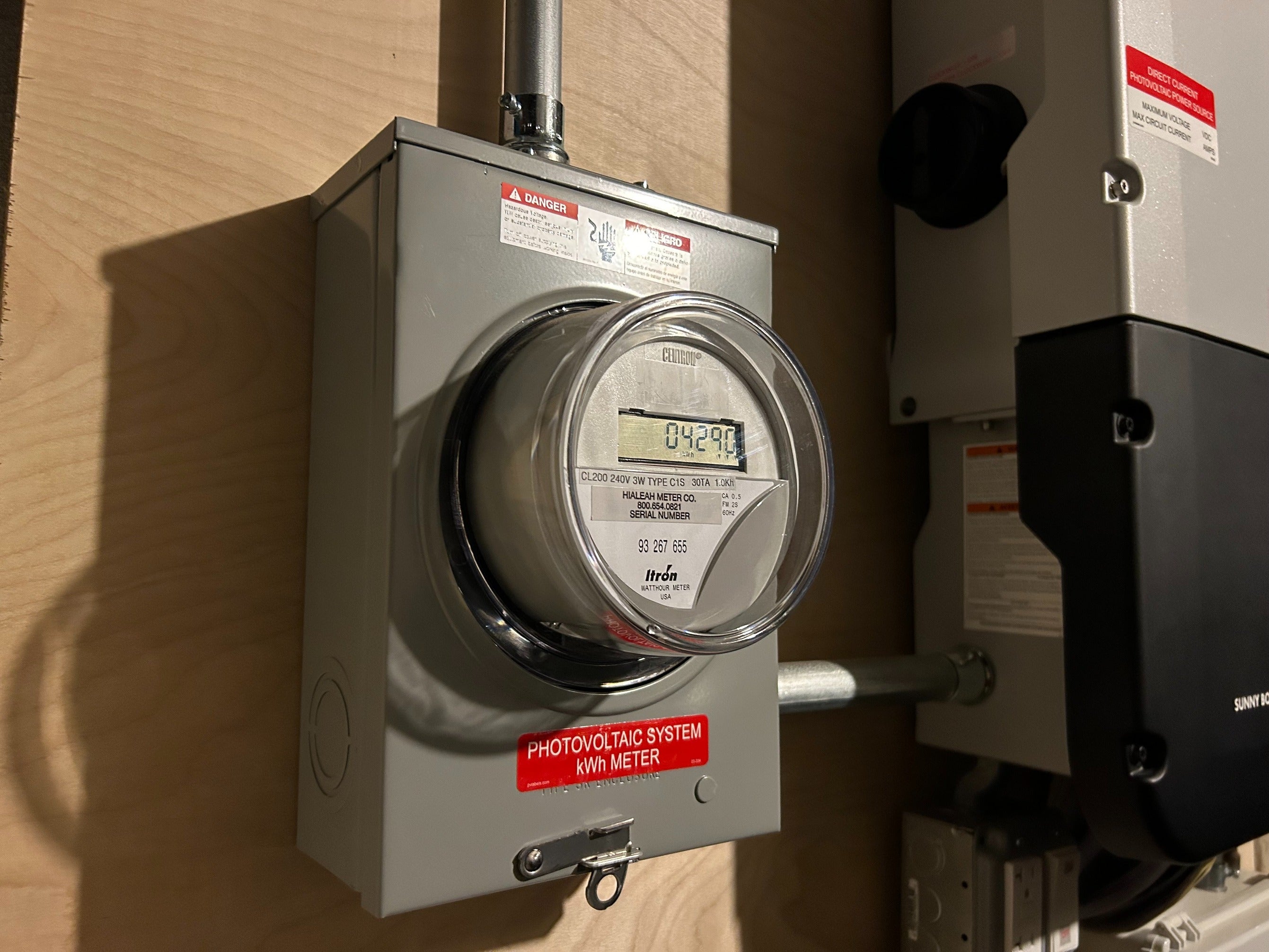Strategic Initiatives in Renewable Energy and Contribution to Sustainable Development Goals
Advancing SDG 7 (Affordable and Clean Energy) and SDG 13 (Climate Action)
The global energy sector faces the dual challenge of meeting rising energy demand while addressing climate change. In alignment with the Paris Agreement and Sustainable Development Goal 13 (Climate Action), a commitment has been made to achieve net-zero emissions by 2050. This objective is pursued through strategic investments in renewable energy, focusing on solar and wind power to increase the share of clean energy in the global mix, directly supporting SDG 7.
Development of Large-Scale Renewable Energy Infrastructure
To achieve these climate and energy goals, the strategy focuses on the development of new, large-scale renewable energy projects.
- Large Solar and Onshore Wind Plants: The development, financing, construction, and operation of large-scale solar and onshore wind facilities are central to this strategy.
- An 800-megawatt (MW) solar plant in Al Kharsaah, Qatar, is set to meet approximately 10% of the country’s peak electricity demand.
- This project is projected to reduce CO2-equivalent emissions by 26 million metric tons over its lifespan, making a significant contribution to SDG 13.
- Large Offshore Wind Projects: Leveraging expertise in offshore project management, the portfolio expanded into offshore wind in 2020.
- The Seagreen 1 fixed-bottom offshore wind project in the United Kingdom has a generating capacity of up to 1,500 MW, sufficient to meet the energy needs of approximately 1 million homes. This contributes to SDG 7 and SDG 11 (Sustainable Cities and Communities).
- Agreements for floating offshore wind projects in the United Kingdom (100 MW), South Korea (up to 2,000 MW), and France (30 MW) position the company as a pioneer in this innovative sector, aligning with SDG 9 (Industry, Innovation, and Infrastructure).
Supporting Sustainable Communities and Grid Modernization
Initiatives are also in place to empower consumers and enhance the reliability of renewable energy systems.
- Distributed Power Generation Solutions: Tailor-made photovoltaic solar systems for installation on rooftops, parking lots, and vacant land are provided to consumers, municipalities, and companies. These solutions enable customers to produce and consume their own clean energy, contributing to SDG 11 and SDG 12 (Responsible Consumption and Production) while reducing electricity costs.
- Stationary Energy Storage Solutions: To ensure grid stability and overcome the intermittent nature of solar and wind power, investments are being made in large-scale electricity storage. This is a critical enabler for SDG 7.
- A major battery storage project in Dunkirk, France, features a total capacity of 61 megawatt-hours.
- The affiliate company, Saft, produces high-tech industrial batteries that provide the necessary infrastructure for reliable renewable energy applications, furthering the objectives of SDG 9.
Market Expansion and Future Targets
The objective is to expand the portfolio of European gas and power customers from 9 million in 2021 to a target of 13 million by 2025, facilitating a broader transition to cleaner energy sources across society.
1. Which SDGs are addressed or connected to the issues highlighted in the article?
- SDG 7: Affordable and Clean Energy: The article’s central theme is the company’s heavy investment in and development of renewable energy sources, specifically solar and wind power, to meet rising energy demand.
- SDG 13: Climate Action: The primary motivation stated is the “dual challenge of climate change” and the corporate ambition to achieve “net-zero emissions for all our businesses by 2050,” directly addressing climate change mitigation.
- SDG 9: Industry, Innovation and Infrastructure: The text describes the development of large-scale, technologically advanced infrastructure projects, such as offshore wind farms, large solar plants, and stationary battery storage systems, which represent an upgrade to more sustainable and resilient infrastructure.
- SDG 11: Sustainable Cities and Communities: The article mentions providing distributed power generation for municipalities and consumers, as well as large-scale projects designed to power millions of homes, contributing to more sustainable energy systems for communities.
2. What specific targets under those SDGs can be identified based on the article’s content?
SDG 7: Affordable and Clean Energy
- Target 7.1: By 2030, ensure universal access to affordable, reliable and modern energy services. This is connected to the company’s goal to “expand our portfolio of European gas and power customers from 9 million in 2021 to 13 million in 2025.”
- Target 7.2: By 2030, increase substantially the share of renewable energy in the global energy mix. This is the core focus of the article, which details the company’s strategy of “investing heavily in renewables” and developing large solar and wind projects.
SDG 13: Climate Action
- Target 13.2: Integrate climate change measures into national policies, strategies and planning. The company’s ambition to “get to net-zero emissions… by 2050” represents the integration of climate change measures into its corporate strategy and planning.
SDG 9: Industry, Innovation and Infrastructure
- Target 9.4: By 2030, upgrade infrastructure and retrofit industries to make them sustainable, with increased resource-use efficiency and greater adoption of clean and environmentally sound technologies and industrial processes. This is demonstrated by the financing and construction of large-scale renewable energy plants and “cutting-edge technologies” like stationary energy storage solutions.
SDG 11: Sustainable Cities and Communities
- Target 11.6: By 2030, reduce the adverse per capita environmental impact of cities. This is addressed by providing clean energy solutions that reduce the carbon footprint of urban areas, such as the Seagreen 1 project which will “cover the energy needs of around 1 million U.K. homes” with clean power.
3. Are there any indicators mentioned or implied in the article that can be used to measure progress towards the identified targets?
- Renewable Energy Capacity (MW): The article provides specific figures for new renewable energy generation capacity, which is a direct indicator for Target 7.2. Examples include the 800-megawatt (MW) solar plant in Qatar, the 1,500 MW Seagreen 1 offshore wind project, and floating offshore wind projects in the UK (100 MW), South Korea (up to 2,000 MW), and France (30 MW).
- Greenhouse Gas (GHG) Emission Reductions: A key indicator for SDG 13 is the amount of emissions reduced. The article states the Al Kharsaah solar plant will reduce CO2-equivalent emissions by 26 million metric tons throughout its life. The overall corporate goal of “net-zero emissions… by 2050” is also a long-term indicator.
- Energy Storage Capacity (MWh): The development of a battery storage project in Dunkirk with an overall capacity of 61 megawatt-hours (MWh) is a specific indicator for Target 9.4, measuring the adoption of technologies that support the stability and growth of renewable energy.
- Number of Customers/Households Served: An indicator for Target 7.1 and 11.6 is the number of people with access to modern energy. The article mentions a goal to grow the customer base from 9 million to 13 million by 2025 and notes that one project will power “around 1 million U.K. homes.”
4. Create a table with three columns titled ‘SDGs, Targets and Indicators” to present the findings from analyzing the article.
| SDGs | Targets | Indicators |
|---|---|---|
| SDG 7: Affordable and Clean Energy | 7.2: Increase substantially the share of renewable energy in the global energy mix. | – Development of an 800 MW solar plant. – Development of a 1,500 MW offshore wind farm. – Development of over 2,130 MW in floating offshore wind projects. |
| SDG 7: Affordable and Clean Energy | 7.1: Ensure universal access to affordable, reliable and modern energy services. | – Goal to expand customer base from 9 million to 13 million by 2025. – Providing power for “around 1 million U.K. homes.” |
| SDG 13: Climate Action | 13.2: Integrate climate change measures into policies, strategies and planning. | – Corporate ambition to get to “net-zero emissions… by 2050.” – Reduction of 26 million metric tons of CO2-equivalent emissions from a single project. |
| SDG 9: Industry, Innovation and Infrastructure | 9.4: Upgrade infrastructure and retrofit industries to make them sustainable… with greater adoption of clean and environmentally sound technologies. | – Investment in “cutting-edge technologies in renewable energies.” – Launch of a 61 MWh battery storage project. |
| SDG 11: Sustainable Cities and Communities | 11.6: Reduce the adverse per capita environmental impact of cities. | – Providing distributed power generation solutions for municipalities. – Supplying clean energy to 1 million homes, reducing the carbon footprint of urban energy consumption. |
Source: totalenergies.com






